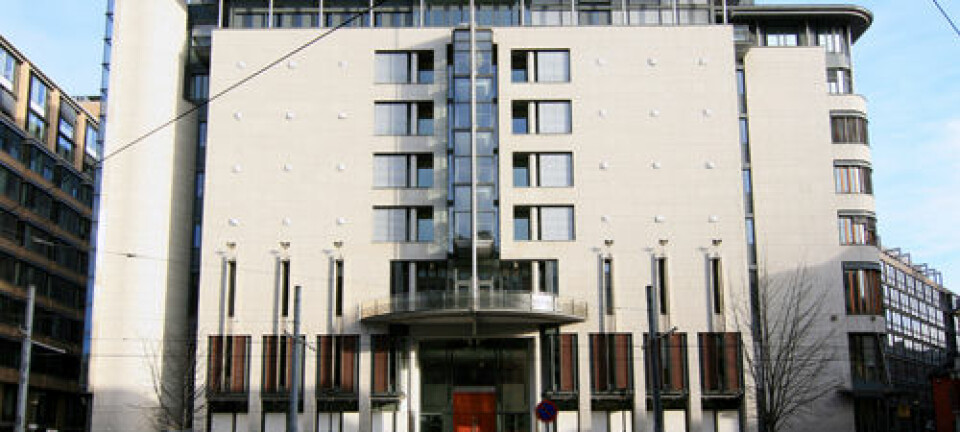
Fascist terror stifled immigration debate
In the months following the terrorist attacks of July 2011, Norwegian media curbed their immigration coverage, which stifled political criticism and focus on issues such as immigrant criminality. Media researchers think the Norwegian terrorist’s fascist and Islamophobic ideology made these issues too hot to handle.
Denne artikkelen er over ti år gammel og kan inneholde utdatert informasjon.
The dual attacks in Norway on 22 July 2011 by a Norwegian right-wing extremist killed 77 people. It was the worst terrorist attack ever to strike Norway and one of the deadliest perpetrated by a single person.
Eight died and roughly 30 were wounded when Anders Behring Breivik exploded a truck bomb in downtown Oslo. He then made his way to a Labour Party Youth summer camp outside the capital where, disguised as a policeman, he shot and killed 69 and wounded another 66.
Recent research from the University of Oslo has uncovered yet another of the many impacts of the attack: a change in the way journalists and the media covered immigration.
“There was much less coverage of the immigration debate and there were fewer opportunities for [broadcasting or publishing] criticism about immigration in the months following 22 July," says Audun Beyer, a postdoc at the University of Oslo’s Department of Media and Communication. "We see a change in what was allowed to be said in the Norwegian media.”

Beyer assessed news coverage of immigration and ethnic minorities in the major Norwegian media in 2011. He and a research colleague, Tine Ustad Figenschou, analysed nearly 3,200 articles and TV segments from three major newspapers, VG, Aftenposten and Dagbladet, as well as the TV channels NRK and TV2. The study included editorials as well as news copy and footage, but the researchers did not analyse the newspapers and TV channels’ web media.
Whereas one-third of all printed or aired immigration-related items focused on the pros and cons of immigration policies prior to 22 July, just one in ten had the same focus after the attack. The findings point to a stronger consensus in the subsequent weeks and months.
Less criticism
Although changes in Norwegian opinion on immigration policies after the attack are well known, until now no researcher has really charted the impact this had in the media. Here, the researchers conducted a unique analysis of media content starting at the beginning of 2011, which enabled them to compare coverage before and after the bombing and mass murder.
Up until 22 July they found an average of ten media items a day related to immigration or immigrants. Afterwards, this dropped to an average of seven.
The focus of the coverage changed, too. The media devoted fewer pages and air time to immigration policies. There were fewer critical examinations of religion and culture, criminality rates among immigrant groups and prospective problems such as the high rate of immigrants receiving welfare benefits.
“These might have been themes that they (the media) thought would contribute to bad publicity for immigrants. Not many wanted to say anything critical about immigration publicly after 22 July, because the attacker (Breivik) staunchly opposed immigration. So potential immigration coverage was replaced by discussions about things like national identity and debates about how the immigration controversy should be approached,” says Beyer.
He stresses that the researchers have not directly analysed why the subject matter changed.
The study quantifies articles and looks at the kinds of themes they covered, but not why journalists, editors and letter-writers/debaters made their decisions.
“The change can also be attributed to a surge in resources focused on covering the 22 July attack, so perhaps they also lacked the capacity to continue writing as much about immigration policy matters,” says Beyer.
“Naturally there was an upswing in articles and TV footage about terrorism and violent extremism after the terrorist attack. So it could be argued that there was neither enough column space nor journalistic manpower to cover political issues related to immigration. But I actually think this subject matter did become more controversial,” he said.
He points to the study’s findings that the right-wing Progress Party was more prone toward bad-mouthing immigration prior to 22 July than afterwards, when they found themselves spending more time trying to defend their stance.
This tends to suggest which opinions were politically acceptable in the Norwegian media in the autumn of 2011.
Statistics Norway conducted a survey of attitudes towards immigrants and immigration in 2011 which showed that people expressed themselves more positively towards immigration after 22 July. Beyer thinks it is natural for the media to reflect this reorientation.
Change in players
The researchers also looked at the types of people who expressed themselves in the media. Controversial voices in the media that had previously operated under the radar, such as xenophobic bloggers, started to get public attention. But after 22 July their viewpoints were perceived to be more illegitimate. There was a backlash and they had to distance themselves from Breivik, the terrorist.
The rank and file dropped out of the media picture as experts and authorities were given more voice. Opinion and editorial material in the media rose from 37 percent to 47 percent.
“A rise in experts and more opinion is probably linked to a greater need to explain a terrible and shocking event,” says Beyer.
Despite then-Prime Minister Jens Stoltenberg’s mantra that the atrocity would, counter to the wishes of the terrorist, “lead to more openness and more democracy” and focus on inclusion, fewer people with immigrant backgrounds were covered by the media after 22 July than before.
“Immigrants often talk about themselves and their own personal experiences in their role as minorities. But they are rarely expert sources. Because average citizens were scarcer as sources in the media, the number of sources with immigrant backgrounds dropped too,” asserts Beyer.
---------------------------
Read the Norwegian version of this article at forskning.no
Translated by: Glenn Ostling


































